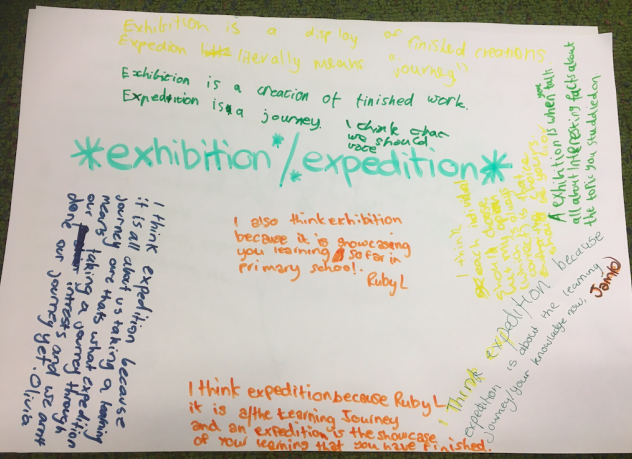Building community creates a sense of belonging.
This is the ‘central idea’ that will form the basis of our whole school inquiry in 2020. As teachers work on building cohesion, learners will inquire into different aspects of this conceptual idea. I’m hopeful to facilitate a parent inquiry group too.
Each IB PYP unit of inquiry is based on a meaningful, transferable, conceptual idea that offers possibilities for trans-disciplinary inquiry. Sometimes a central idea comes easily, once we know our conceptual lenses. Sometimes it’s the result of sustained collaborative play with words. Sometimes we know a central idea isn’t perfect, but it’s the best we can do. On occasion, we know it isn’t perfect but we don’t mind, because it expresses the right message and we care more about the sentiment than the rules.
This particular central idea has a story…
Part of the story was written by Helen Street, the author of Contextual Wellbeing, a book which has resonated for many of us in our learning community. So much of what she says is common sense, once you think about it. Much of it builds on ideas we’ve been thinking about for years. We’ve had early morning book discussions and planned meetings and parent sessions around some of the ideas. Some of our Year 6 students have read parts of the book and were grateful for an opportunity to connect virtually and chat with Helen last week.

As the ideas from the book began to take hold in our Year 6 community, students explored the notion of Ubuntu, an African concept which translates approximately as ‘I am because we are’, and the learning began to look less and less like traditional school and more of a transformative experience for learners and teachers alike. Seeing how the learning was unfolding, one of the teachers suggested an idea for a whole school inquiry for next year: ‘A community collaborates to create change’. Teachers of the lower grades suggested that a more appropriate version for the younger learners might be ‘Individuals collaborate to build community’.
Analysing the data gathered from teachers’ reflections for our self study, the Teaching and Learning team noticed a pattern. Many of the suggestions and wonderings revealed the idea of building cohesion as an opportunity for growth, be this in terms of encouraging connections between early years and primary, increasing flow of learning time, building a stronger sense of belonging or improving our partnerships with parents. Perhaps the whole school central idea might be ‘Cohesion empowers community’ or ‘Building cohesion strengthens community’, strong possibilities and yet, while we are not afraid to introduce difficult vocabulary to our youngest learners, not quite child friendly enough…
We gathered a group of teachers to work on reviewing our program of inquiry, representatives of every grade from preschool to Year 6. Our POI reflection began with people sharing their responses to this provocation: ‘My favourite unit of inquiry ever was… because…’ and we identified common themes. The best units were organically trans-disciplinary, based on real life learning, evolved as they unfolded, included authentic action, involved self discovery, allowed for the development of the whole child, were often led by the learners and focused on process, rather than content. Based on these themes, this group came up with further suggestions for our new central idea.

We knew what we wanted, but the wording that would capture the essence remained elusive. Various individuals and groups collaborated to play with the words and, as commitment to the idea became embedded (alongside yet another reading group discussing Contextual Wellbeing) there was a sense of being part of something bigger, of contributing to the development of our learning community. What we were doing was a small example of what we wanted to achieve!
A group of students invited to the discussion spoke a lot about the idea of belonging needing to be in the central idea. They suggested ‘Belonging to a community helps us grow’ pointing out that the growth might refer to learning as individuals and as a community. It could refer to going out of our comfort zones or growing socially or academically. If the focus is on community, belonging and cohesion, then the central idea should reflect that, they said. In their words: “Let’s be honest, the central idea is what we look at and what brings us together”.
A moment of jubilation followed, not just because we were excited by the insights of children and delighted by their valuable input, but because it felt so right. And then some doubt crept in… Might there be those for whom ‘belonging to a community’ could be perceived as passive? We had added the layer of belonging but lost the component of action. We needed an active verb in the central idea!
And finally, as a group of teachers pondered around the staffroom table one morning, one teacher sat quietly, seemingly answering his emails, while others conversed. And then, ‘How about this?’ he asked, ‘Building community creates a sense of belonging.’ Bingo!
It might not follow some of the so called rules for writing central ideas, but it fulfils our needs and we are excited by the possibilities. And its biography reflects the very thing we are aiming towards…








